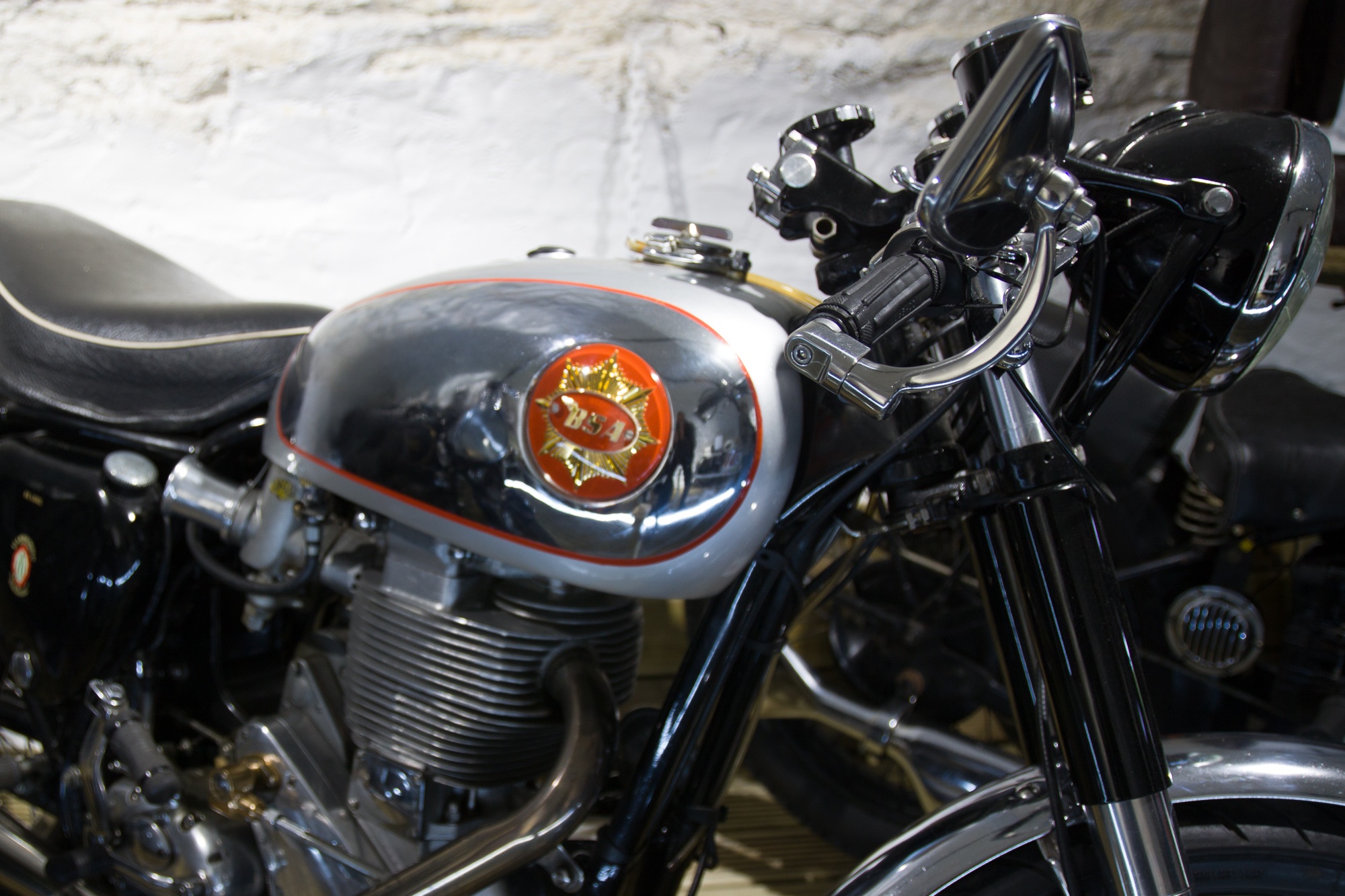BSA Gold Star DBD34 1961
In 1937, Wal Handley lapped the Brooklands circuit at over 100mph (160km/h) on a BSA Empire Star, and was awarded one of the traditional Gold Star pins for the feat. That inspired BSA to produce the BSA Gold Star. The following year saw the first of the production Gold Stars, the M24, complete with the trademark alloy barrel and cylinder head. It had an alloy 496cc engine.
The engines were built from individually selected parts and bench tested, a practice that was to remain throughout its life. The machine, an instant ‘good-looker’ and a bargain at £82, was capable of 90mph performance though possibly without handling to match, and pre-war production was restricted to under 500 machines. This model continued up to the start of World War II.
Following the war, BSA launched the ZB32 Gold Star in 1948 at a price of £211. In order to satisfy the eligibility requirements for the Clubmans TT, over 100 machines were produced, 21 of which were entered into the 1949 350cc junior race, a race to be dominated by Gold Stars for the next eight years. The 350cc model was followed by the 500cc ZB34 and with it followed success in both trials and scrambles as well as road racing.
1953 saw the introduction of the BB series (BB32 – 350cc / BB34 – 500cc) with new duplex cradle frame and swinging arm rear suspension. These were followed in 1954 by the CB series with engine changes aimed primarily at the road racers. Immediate success was achieved in the Clubmans TT and this cycle of engine redesign and immediate success was repeated the following year with the DB series. The Senior TT was won by Eddie Dow who later went into business as Britain’s Gold Star Specialists providing a wide range of custom accessories.
In 1956, further modifications were made to the cylinder head designated the DBD34 range. Perhaps the ultimate form of the pre unit Gold Star,
On kind loan from John (Mary) Poutney of Tamworth
